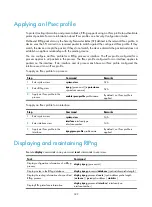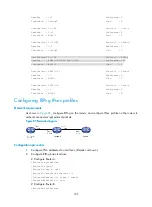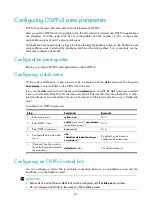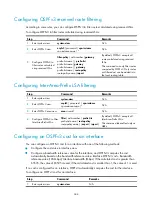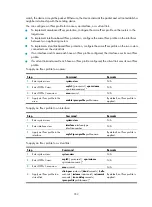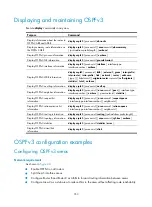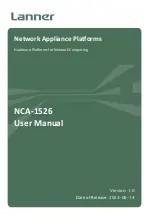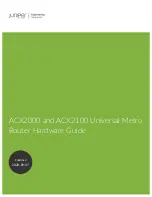
339
•
Inter-Area-Router LSA
—Type-4 LSA, originated by ABRs and flooded throughout the LSA's
associated area. Each Inter-Area-Router LSA describes a route to ASBR.
•
AS External LSA
—Type-5 LSA, originated by ASBRs, and flooded throughout the AS, except stub
and NSSA areas. Each AS External LSA describes a route to another AS. A default route can be
described by an AS External LSA.
•
Link LSA
—Type-8 LSA. A router originates a separate Link LSA for each attached link. Link LSAs
have link-local flooding scope. Each Link LSA describes the IPv6 address prefix of the link and
Link-local address of the router.
•
Intra-Area-Prefix LSA
—Type-9 LSA. Each Intra-Area-Prefix LSA contains IPv6 prefix information on
a router, stub area, or transit area information, and has area flooding scope. It was introduced
because Router LSAs and Network LSAs contain no address information.
•
Grace LSA
—Type-11 LSA, generated by a GR (Graceful Restart) restarter at reboot and transmitted
on the local link. The GR restarter describes the cause and interval of the reboot in the Grace LSA
to notify its neighbors that it performs a GR operation.
Protocols and standards
•
RFC 5340,
OSPF for IPv6
•
RFC 2328,
OSPF Version 2
•
RFC 5187,
OSPFv3 Graceful Restart
OSPFv3 configuration task list
Tasks at a glance
Configuring OSPFv3 area parameters
•
•
Configuring an OSPFv3 virtual link
Configuring OSPFv3 network types
:
•
Configuring the OSPFv3 network type for an interface
•
Configuring an NBMA or P2MP neighbor
Configuring OSPFv3 route control
•
Configuring OSPFv3 route summarization
•
Configuring OSPFv3 received route filtering
•
Configuring Inter-Area-Prefix LSA filtering
•
Configuring an OSPFv3 cost for an interface
•
Configuring the maximum number of OSPFv3 ECMP routes
•
Configuring a preference for OSPFv3
•





